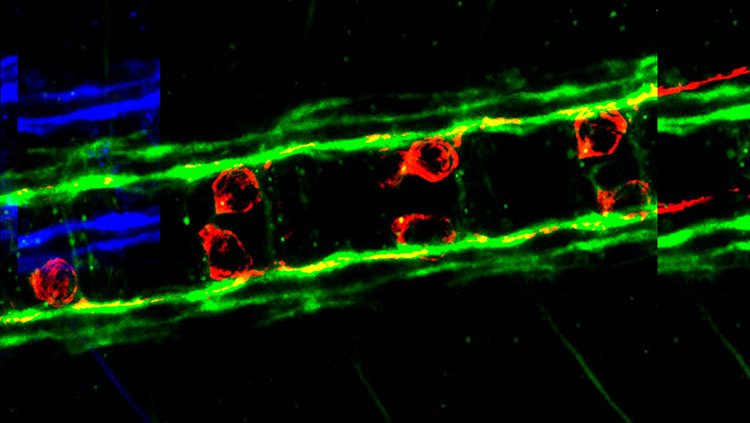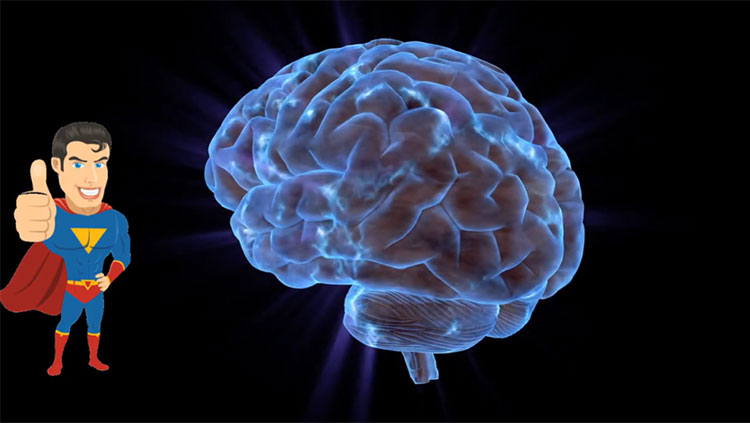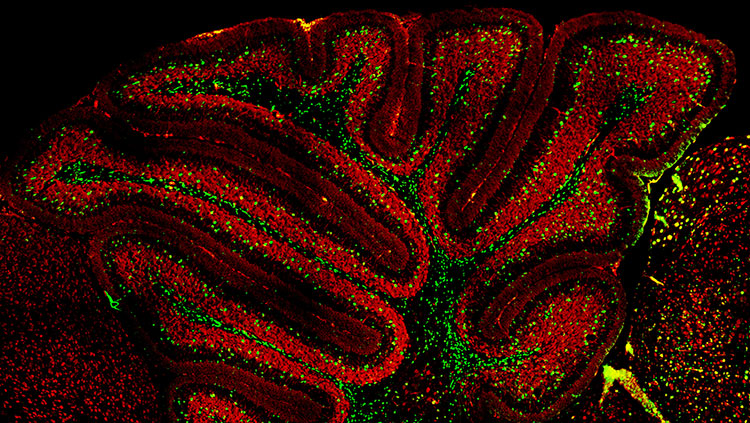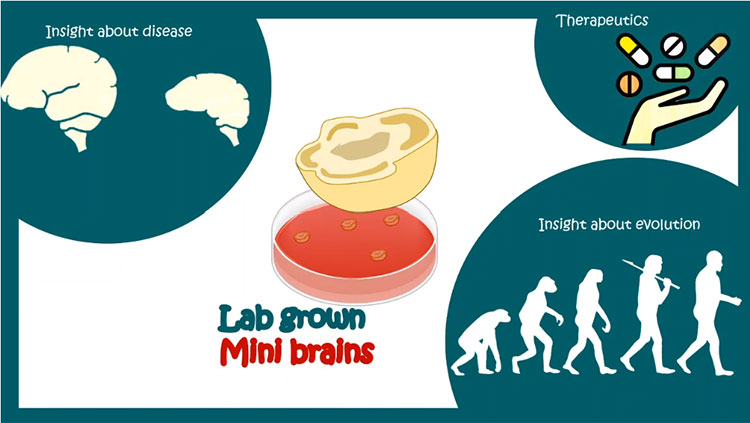Pioneer Cells Blaze Trails in the Young Brain
- Published18 Sep 2018
- Reviewed18 Sep 2018
- Author Charlie Wood
- Source BrainFacts/SfN

The brain has tens of billions of neurons, and each has a certain role to play in a particular place in the brain. Figuring out how the various types know where to settle as an organism develops has been an outstanding challenge for neuroscientists.
Pathfinding pioneer neurons, shown here in red, help neurons find their assigned posts. While the young brain remains fairly small and simple, these trailblazers strike out into unknown regions, laying down axons as they go. Later, as the maturing brain grows more complex, more permanent colonizers follow this trail of breadcrumbs. Without pioneer cells, it takes longer for the brain’s wiring to link up and it becomes disorganized. So while neurons could eventually find their way on their own, pioneer cells make the process a whole lot smoother.
CONTENT PROVIDED BY
BrainFacts/SfN
References
Bentley, D., & Caudy, M. (1983). Pioneer axons lose directed growth after selective killing of guidepost cells. Nature, 304, 62-65. doi: https://doi.org/10.1038/304062a0
Also In Brain Development
Trending
Popular articles on BrainFacts.org


















